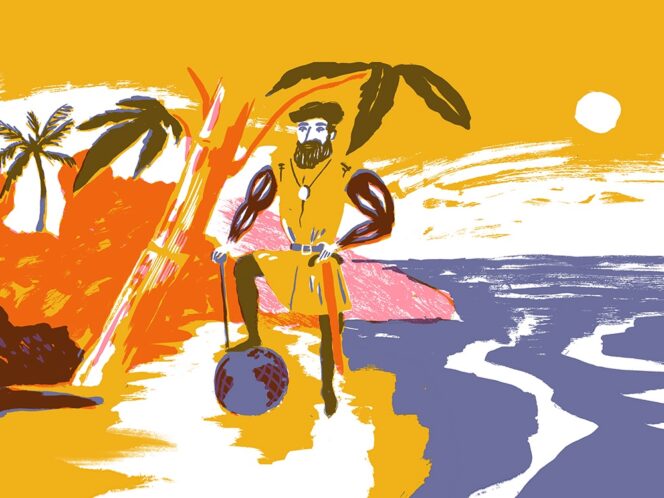
They say my adventures inspired the story of Robinson Crusoe, but that’s only part of the truth. What I experienced is far more interesting, dramatic, and exciting. And of course, it really happened.
My name is Alexander Selkirk and I’m soon going to die. Here, off the west coast of Africa, I will end my days as a lieutenant in the Royal Navy on board HMS Weymouth. I will be one of the many victims of a disease that is decimating our crew called yellow fever. Many a man on board can now be found shaking and vomiting, or bleeding from his eyes and mouth. On October 23, 1721, we counted seventy-two healthy men. The next day there were fifty-seven. Soon my time will come.
I only hope I won’t be a nameless victim, that Alexander Selkirk will be remembered for years to come. This is highly likely because people like to hear and read about the adventures of seafarers. Not long before I embarked on this journey, a book written by Daniel Defoe had met with great success. It was titled: The life and strange surprizing adventures of Robinson Crusoe, of York, mariner: Who lived Eight and Twenty Years, all alone in an un-inhabited Island on the Coast of America, near the Mouth of the Great River of Oroonoque; Having been cast on Shore by Shipwreck, wherein all the Men perished but himself. With An Account how he was at last as strangely deliver’d by pyrates. Written by Himself. Despite its long and hard-to-remember title, the book sold well, had several reprints, and a few months after its release, Defoe had to write a sequel (they say he has also written the third part).
We never met, but I heard that the writer had acquainted himself with the press reports and might have been inspired by my adventures. However, Robinson Crusoe’s fate is completely different—he was a castaway and I was an exile, he had a black slave and I had no one, I spent four years and four months on a desert island, he spent twenty-eight years.
Therefore, before I die, I want to write down everything I remember. Here are the main events of my life, the seafaring life of Alexander Selkirk.
I, Exile
I was right, back then. In September 1704, after circumnavigating Cape Horn, the Cinque Ports was in a deplorable condition.








